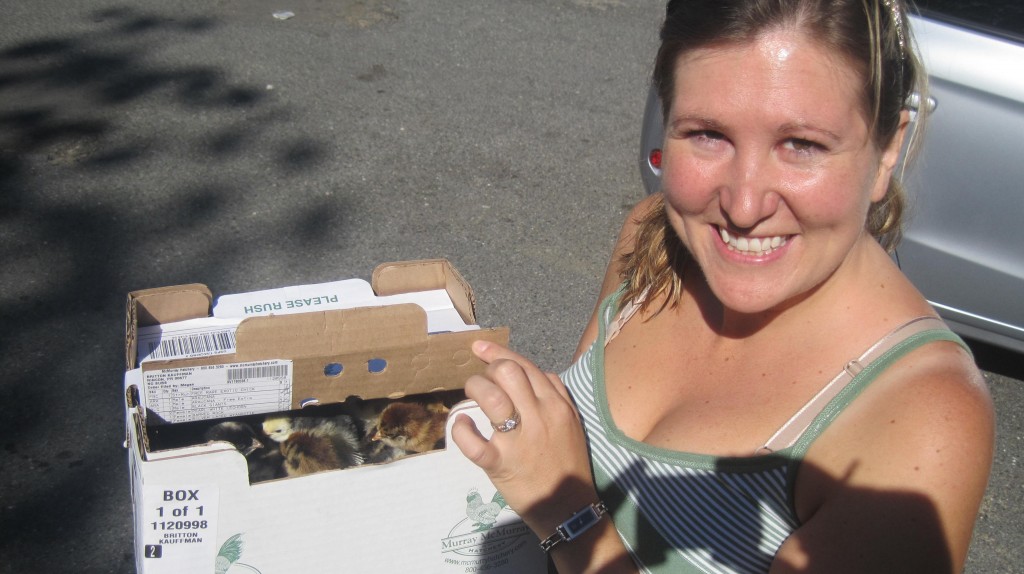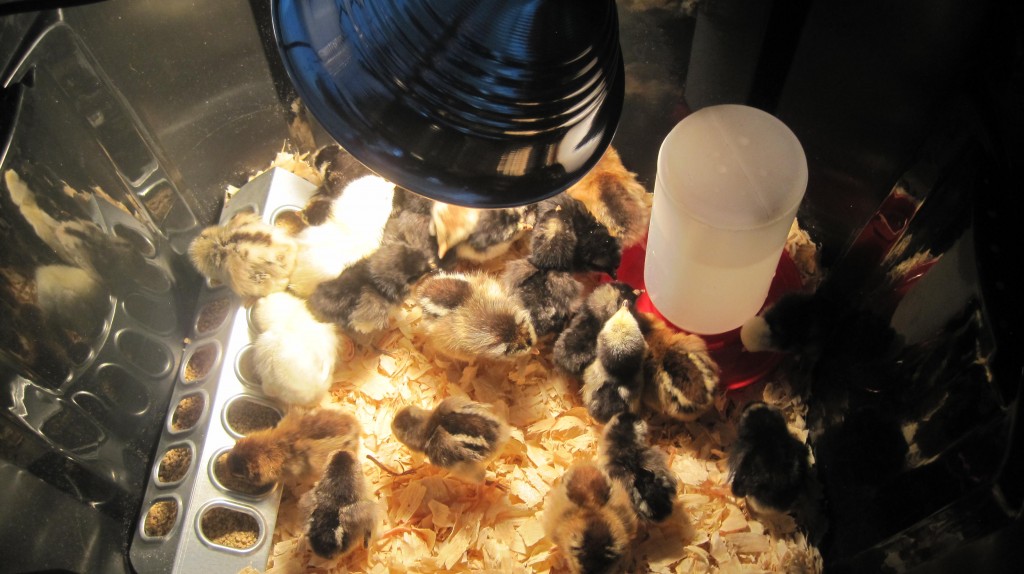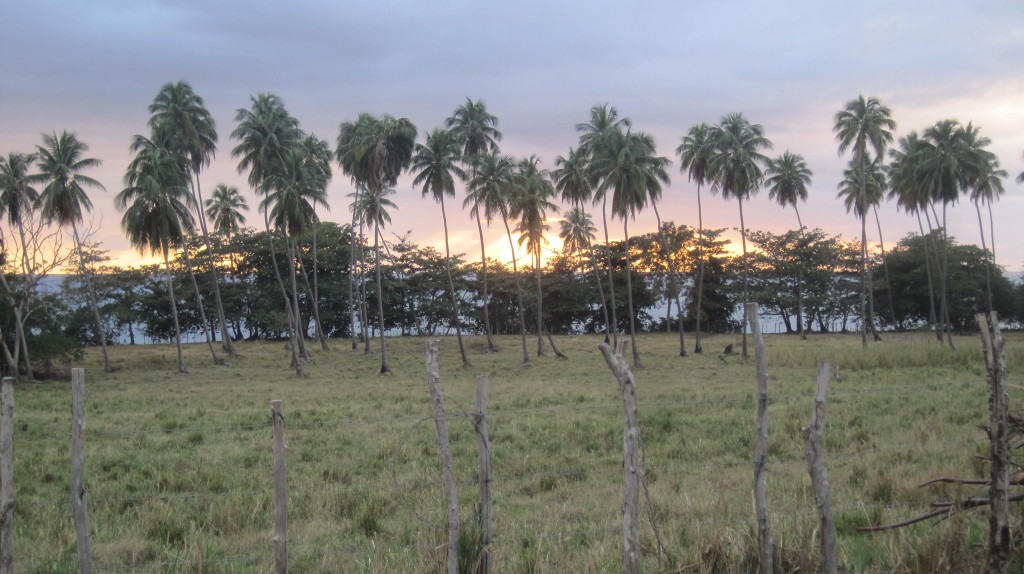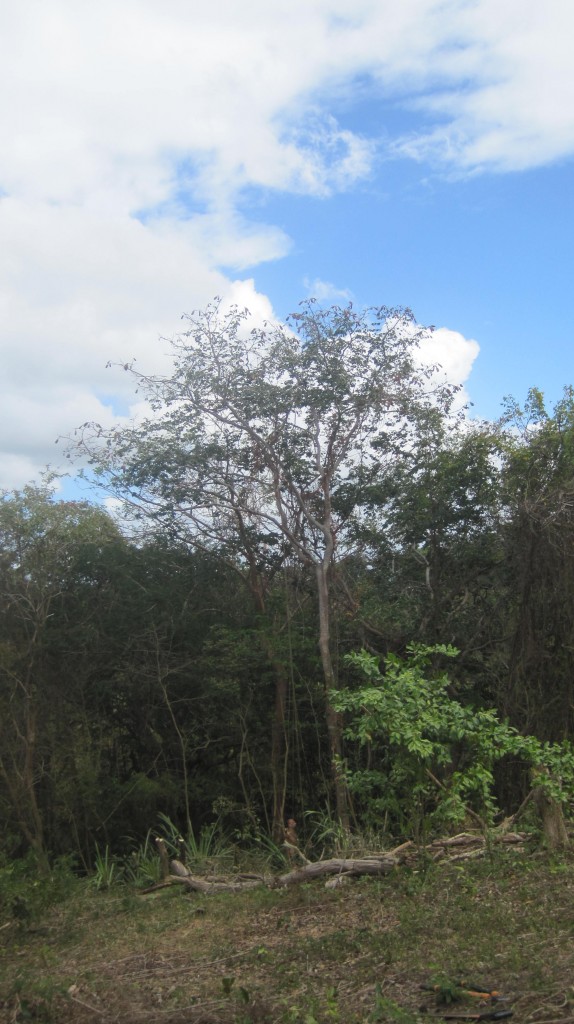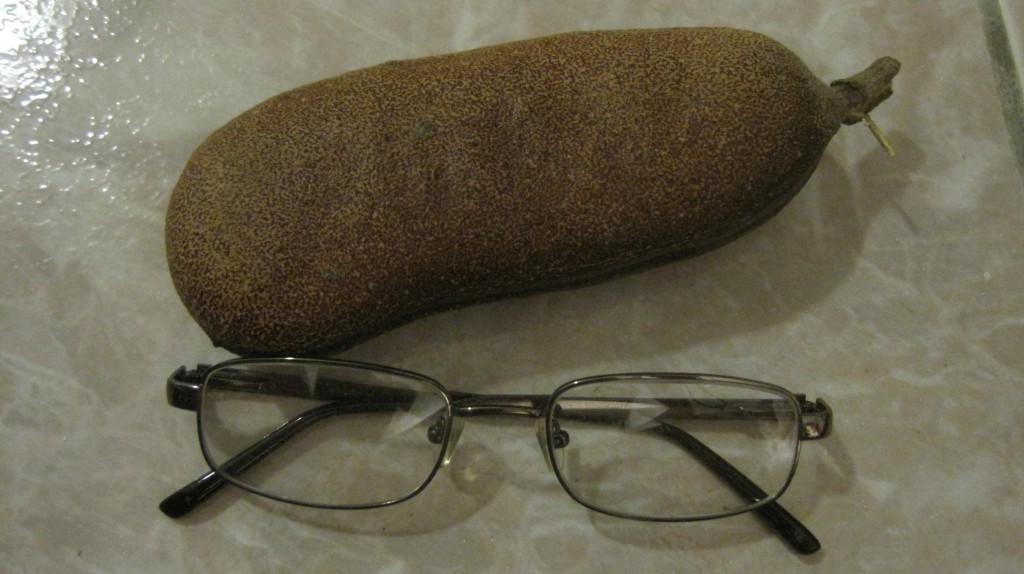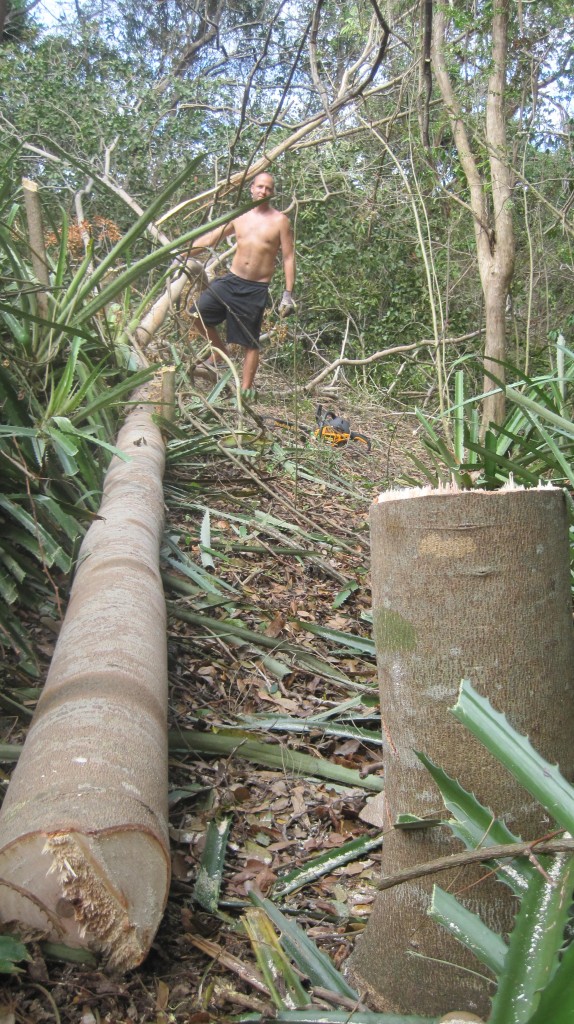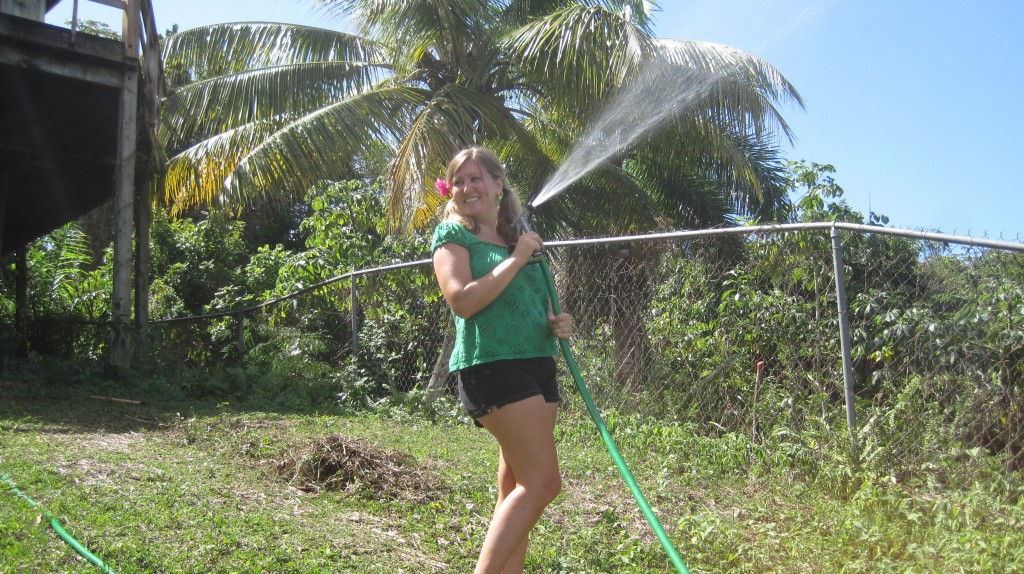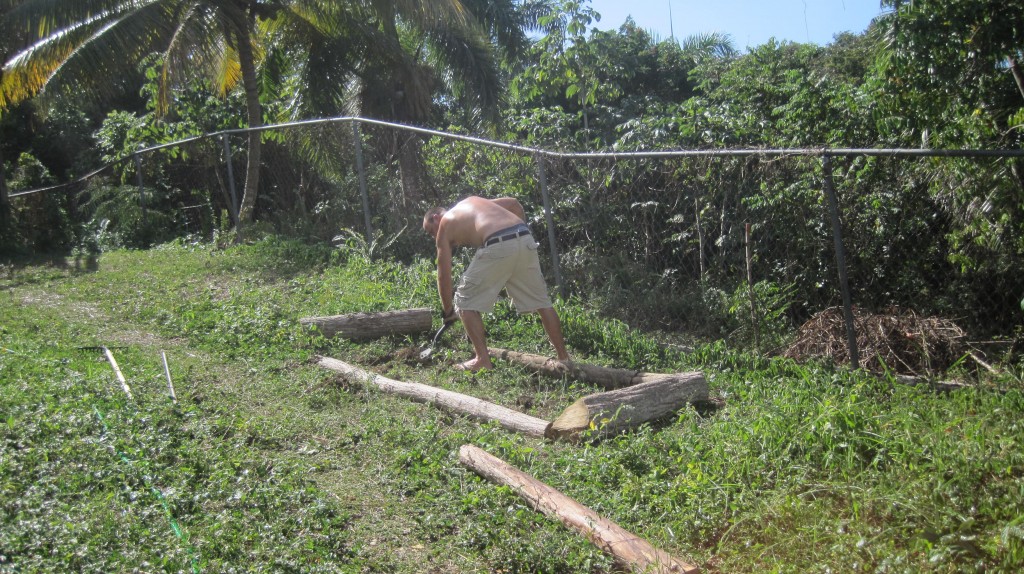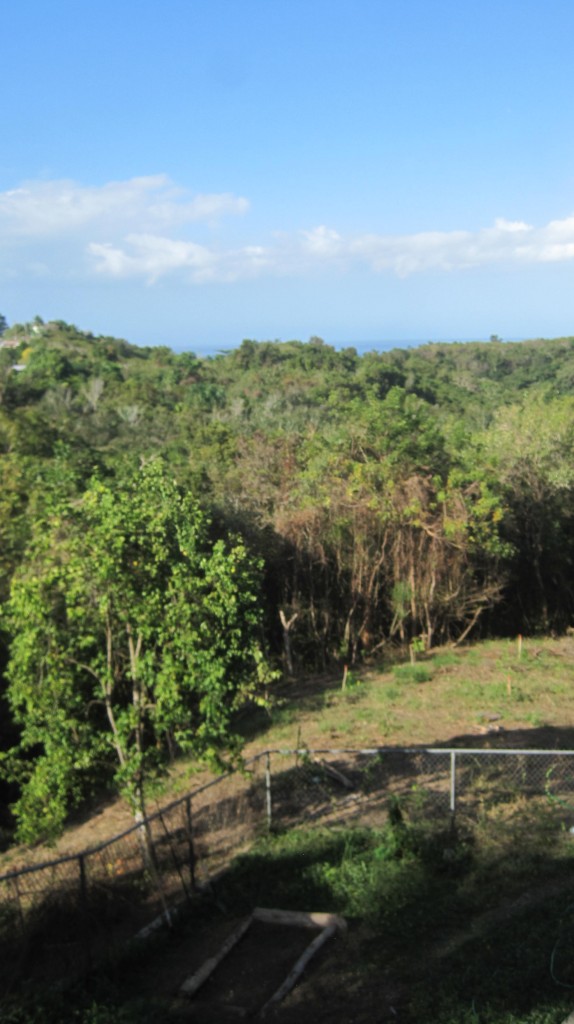Today we went to the Rincón Post Office and picked up our mail-order baby chicks. We had originally expected them last week, but my mom got a phone call (since we don’t have a phone) that they would be arriving this week instead. We received an email that they were en route on Sunday with an expected arrival date of Tuesday, but we thought we had better check this morning anyway just in case.
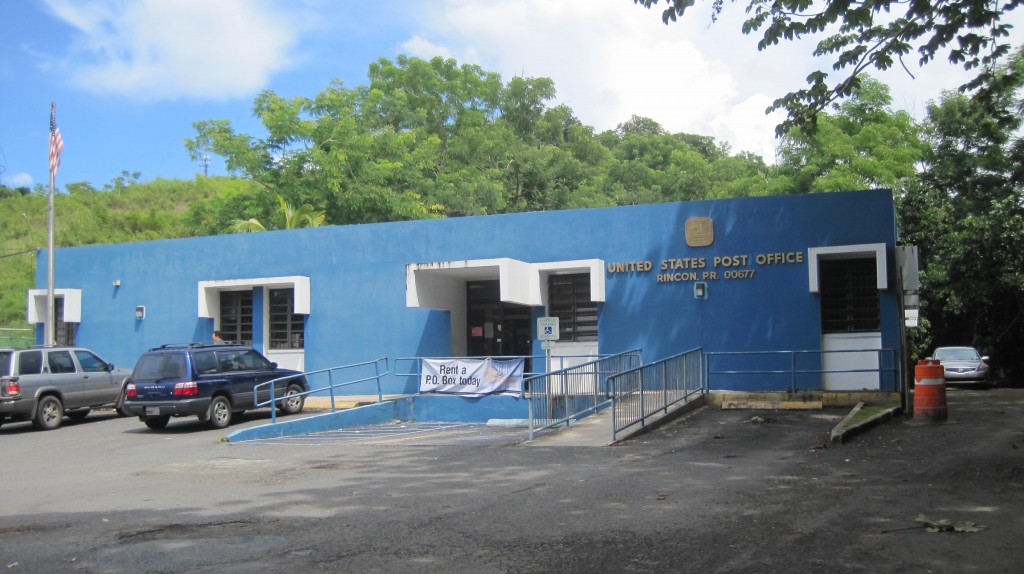
Chicks were waiting for us at the Rincón Post Office
Well it was a good thing we did because we walked into the post office and could hear their little chirping voices behind the counter! This was the first time we had ever ordered chicks before and it worked out great, all the way from Iowa/Minnesota to Rincón, Puerto Rico in approximately 24 hours! Since Puerto Rico is part of the U.S., anything that can be shipped via US Mail can come to us. In the case of live animals it is sent Express/overnight.
Baby chicks can be sent through the mail actually much easier than a full-sized chicken could. When they hatch they pull the yolk sack through their belly and can live on the nutrients of the yolk for about 72 hours without any water or feed. However, they are very cold sensitive and for that reason you must have a minimum order so that they can keep each other warm with their body heat. Once we got them home we had to dip each of their beaks into water, set up the heat lamp (they need about 95 degrees for the first week or so) and give them some food.
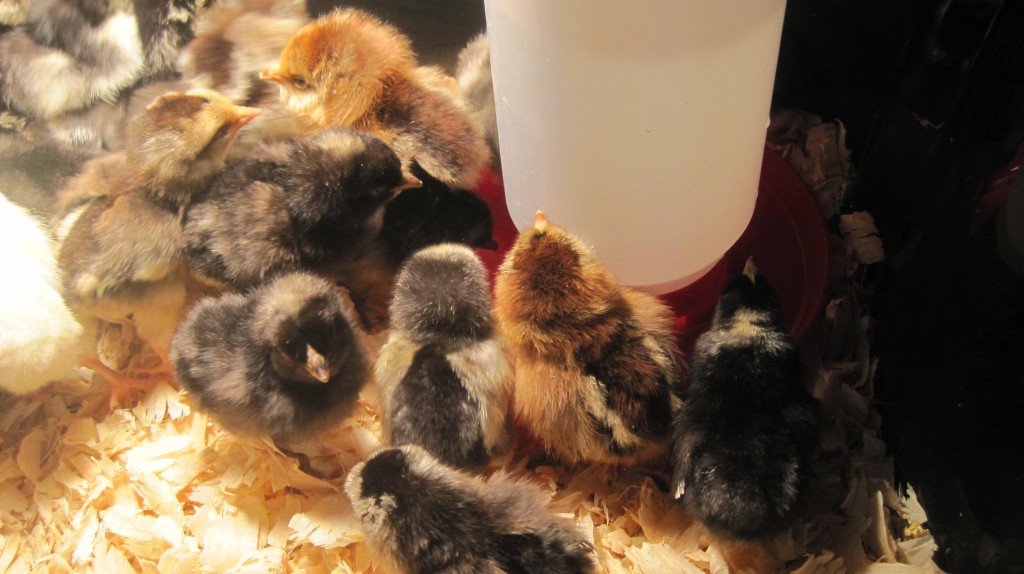
Did I just hear a collective “Awww”? 🙂
We ordered 25 various chicks including some strange/rare ones that you can’t find in Puerto Rico and some that lay dark brown, green/blue, specked and light brown/beige eggs. We eventually want them to be self-sufficient and self-replicating/reproducing so we did order a couple of roosters too. We have never had a rooster either, but we can hear them all around us, so it shouldn’t be much of a change.
The company we bought them from is one of the largest hatcheries in the U.S. and every order of 25 comes with a “free rare exotic chick”. We are not sure which one we got, but it will be interesting to see. One of the puff-ball headed chicks (Polish) looked like a little runt and was about half the size as the others. It was also really listless and couldn’t stand up. We tried helping her and giving her water, but after about 2 hours, she gave up the fight. It was kind of sad, but I suppose that is how nature works. And ultimately we ended up with 25 anyhow. I can see why the company sends an extra just in case.
We are really excited to see how these chicks do and watch as they quickly turn into chickens. Britton and I still have to build a chicken coop in the lower area that we have been clearing of trees, but now we have a little more motivation. And there is nothing like a box of baby chicks to bring a smile to anyone.

